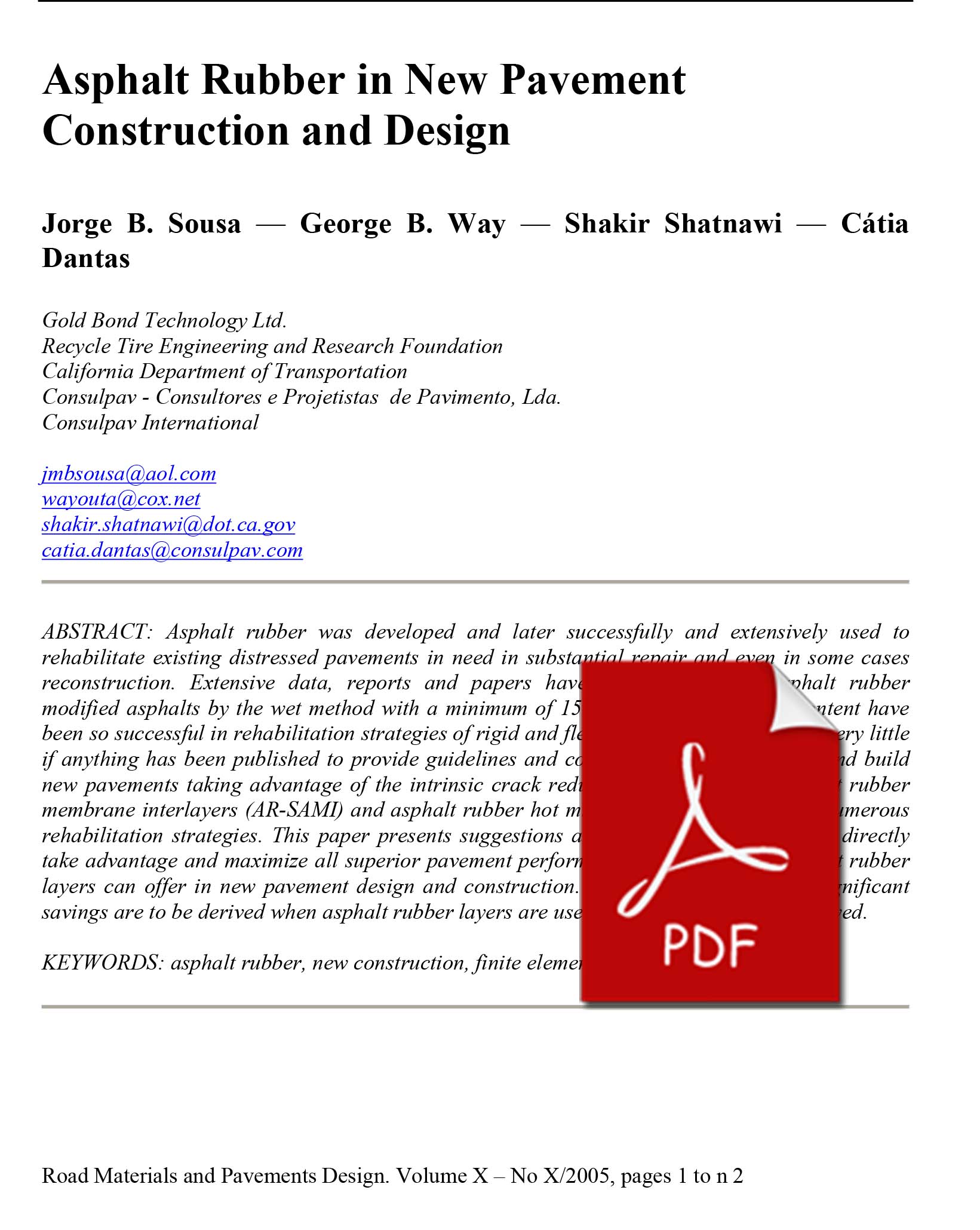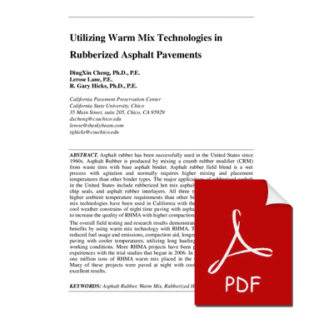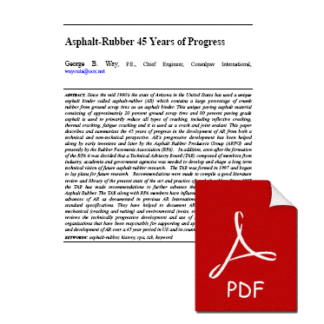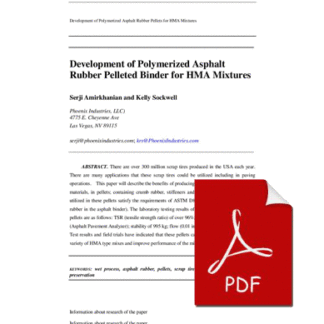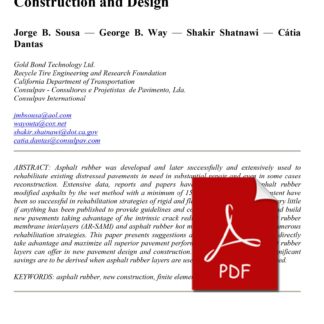Description
Asphalt rubber was developed and later successfully and extensively used to rehabilitate existing distressed pavements in need in substantial repair and even in some cases reconstruction. Extensive data, reports and papers have documented why asphalt rubber modified asphalts by the wet method with a minimum of 15 percent crumb rubber content have been so successful in rehabilitation strategies of rigid and flexible pavements. However very little if anything has been published to provide guidelines and concept strategies to design and build
new pavements taking advantage of the intrinsic crack reducing properties that asphalt rubber membrane interlayers (AR-SAMI) and asphalt rubber hot mixes have demonstrated in numerous rehabilitation strategies. This paper presents suggestions and a proposed approach to directly take advantage and maximize all superior pavement performance properties that asphalt rubber layers can offer in new pavement design and construction. The analysis shows that significant savings are to be derived when asphalt rubber layers are used if these concepts are followed.

